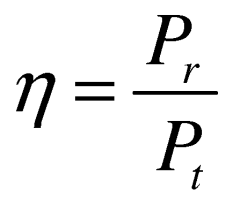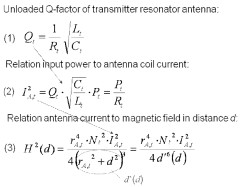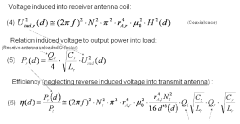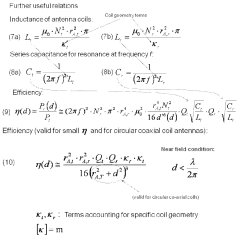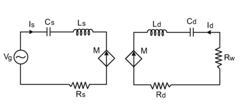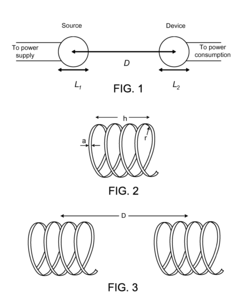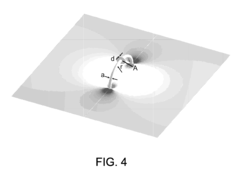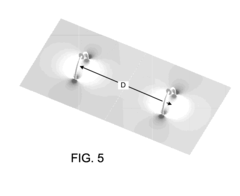Butane's Contribution to Wireless Energy Distribution Techniques
JUL 25, 20259 MIN READ
Generate Your Research Report Instantly with AI Agent
Patsnap Eureka helps you evaluate technical feasibility & market potential.
Butane Energy Tech Evolution
The evolution of butane energy technology in wireless energy distribution techniques has undergone significant advancements over the past decades. Initially, butane was primarily used as a fuel source for portable stoves and lighters. However, its potential in wireless energy distribution began to emerge in the early 2000s when researchers started exploring alternative energy carriers for small-scale power generation.
The first major breakthrough came in 2005 when a team of engineers developed a miniature butane-powered fuel cell capable of generating electricity for portable electronic devices. This innovation sparked interest in utilizing butane as a compact and efficient energy source for wireless applications. The technology relied on catalytic combustion of butane to produce heat, which was then converted into electrical energy through thermoelectric generators.
By 2010, researchers had made significant progress in improving the efficiency and reliability of butane-based energy systems. The development of advanced catalysts and more efficient heat-to-electricity conversion methods led to a new generation of butane-powered devices with higher energy densities and longer operational lifetimes. These advancements paved the way for the integration of butane energy technology into various wireless energy distribution applications.
In 2015, a major milestone was achieved with the introduction of a butane-based wireless charging system for mobile devices. This technology utilized a small butane cartridge to generate electricity, which was then transmitted wirelessly to nearby devices using electromagnetic induction. The system offered a portable and convenient charging solution, particularly in remote areas where traditional power sources were unavailable.
The period between 2015 and 2020 saw rapid advancements in butane energy technology for wireless energy distribution. Researchers focused on improving the safety, efficiency, and scalability of butane-based systems. This led to the development of more sophisticated control mechanisms, enhanced fuel storage solutions, and improved wireless power transfer techniques.
In recent years, the integration of butane energy technology with Internet of Things (IoT) devices has opened up new possibilities for wireless energy distribution. Smart sensors powered by butane-based micro-generators have been deployed in various applications, from environmental monitoring to industrial automation. These self-powered devices can operate autonomously for extended periods, transmitting data wirelessly without the need for frequent battery replacements or wired connections.
Looking ahead, the future of butane energy technology in wireless energy distribution appears promising. Ongoing research is focused on developing more efficient catalysts, exploring novel combustion techniques, and improving the overall system integration. As the demand for portable and wireless power solutions continues to grow, butane-based technologies are expected to play an increasingly important role in addressing the energy needs of various sectors, from consumer electronics to industrial applications.
The first major breakthrough came in 2005 when a team of engineers developed a miniature butane-powered fuel cell capable of generating electricity for portable electronic devices. This innovation sparked interest in utilizing butane as a compact and efficient energy source for wireless applications. The technology relied on catalytic combustion of butane to produce heat, which was then converted into electrical energy through thermoelectric generators.
By 2010, researchers had made significant progress in improving the efficiency and reliability of butane-based energy systems. The development of advanced catalysts and more efficient heat-to-electricity conversion methods led to a new generation of butane-powered devices with higher energy densities and longer operational lifetimes. These advancements paved the way for the integration of butane energy technology into various wireless energy distribution applications.
In 2015, a major milestone was achieved with the introduction of a butane-based wireless charging system for mobile devices. This technology utilized a small butane cartridge to generate electricity, which was then transmitted wirelessly to nearby devices using electromagnetic induction. The system offered a portable and convenient charging solution, particularly in remote areas where traditional power sources were unavailable.
The period between 2015 and 2020 saw rapid advancements in butane energy technology for wireless energy distribution. Researchers focused on improving the safety, efficiency, and scalability of butane-based systems. This led to the development of more sophisticated control mechanisms, enhanced fuel storage solutions, and improved wireless power transfer techniques.
In recent years, the integration of butane energy technology with Internet of Things (IoT) devices has opened up new possibilities for wireless energy distribution. Smart sensors powered by butane-based micro-generators have been deployed in various applications, from environmental monitoring to industrial automation. These self-powered devices can operate autonomously for extended periods, transmitting data wirelessly without the need for frequent battery replacements or wired connections.
Looking ahead, the future of butane energy technology in wireless energy distribution appears promising. Ongoing research is focused on developing more efficient catalysts, exploring novel combustion techniques, and improving the overall system integration. As the demand for portable and wireless power solutions continues to grow, butane-based technologies are expected to play an increasingly important role in addressing the energy needs of various sectors, from consumer electronics to industrial applications.
Wireless Energy Market Demand
The wireless energy market has been experiencing significant growth in recent years, driven by the increasing demand for convenient and efficient power solutions across various industries. As the world becomes more interconnected and mobile, the need for wireless energy distribution techniques has become more pronounced, with butane playing a potential role in this evolving landscape.
The consumer electronics sector represents a substantial portion of the wireless energy market demand. Smartphones, tablets, wearables, and other portable devices are prime candidates for wireless charging solutions, as users seek to eliminate the hassle of cables and improve device mobility. The automotive industry is another key driver, with electric vehicles (EVs) and hybrid cars adopting wireless charging technologies to enhance convenience and promote wider adoption of eco-friendly transportation.
Industrial applications are also contributing to the growing demand for wireless energy distribution. In manufacturing environments, wireless power transfer can improve safety by reducing the need for physical connections in hazardous areas. It also offers greater flexibility in equipment placement and reduces maintenance costs associated with wired power systems.
The healthcare sector presents a unique opportunity for wireless energy solutions, particularly in medical implants and wearable health monitoring devices. These applications require safe, reliable, and long-lasting power sources that can be recharged without invasive procedures.
Smart home and IoT devices are further fueling the demand for wireless energy distribution. As homes become more connected, consumers are looking for seamless ways to power their smart thermostats, security cameras, and other IoT devices without the clutter of wires.
In the context of butane's potential contribution, there is growing interest in exploring alternative energy sources for wireless power transmission. Butane, as a readily available and energy-dense fuel, could potentially be utilized in portable power generation systems that integrate with wireless energy distribution techniques. This could address the need for off-grid or emergency power solutions in remote areas or during disaster relief operations.
The market demand for wireless energy solutions is also being driven by environmental concerns and energy efficiency goals. As organizations and governments worldwide push for greener technologies, there is a growing emphasis on developing wireless energy systems that minimize power loss and maximize energy transfer efficiency. Butane's role in this aspect could involve the development of clean-burning, high-efficiency micro-generators that complement existing wireless power transfer technologies.
As the wireless energy market continues to expand, there is an increasing focus on standardization and interoperability. Consumers and businesses alike are seeking universal wireless charging solutions that work across different devices and brands. This trend is likely to shape the development of future wireless energy distribution techniques, including those that may incorporate butane-based technologies.
The consumer electronics sector represents a substantial portion of the wireless energy market demand. Smartphones, tablets, wearables, and other portable devices are prime candidates for wireless charging solutions, as users seek to eliminate the hassle of cables and improve device mobility. The automotive industry is another key driver, with electric vehicles (EVs) and hybrid cars adopting wireless charging technologies to enhance convenience and promote wider adoption of eco-friendly transportation.
Industrial applications are also contributing to the growing demand for wireless energy distribution. In manufacturing environments, wireless power transfer can improve safety by reducing the need for physical connections in hazardous areas. It also offers greater flexibility in equipment placement and reduces maintenance costs associated with wired power systems.
The healthcare sector presents a unique opportunity for wireless energy solutions, particularly in medical implants and wearable health monitoring devices. These applications require safe, reliable, and long-lasting power sources that can be recharged without invasive procedures.
Smart home and IoT devices are further fueling the demand for wireless energy distribution. As homes become more connected, consumers are looking for seamless ways to power their smart thermostats, security cameras, and other IoT devices without the clutter of wires.
In the context of butane's potential contribution, there is growing interest in exploring alternative energy sources for wireless power transmission. Butane, as a readily available and energy-dense fuel, could potentially be utilized in portable power generation systems that integrate with wireless energy distribution techniques. This could address the need for off-grid or emergency power solutions in remote areas or during disaster relief operations.
The market demand for wireless energy solutions is also being driven by environmental concerns and energy efficiency goals. As organizations and governments worldwide push for greener technologies, there is a growing emphasis on developing wireless energy systems that minimize power loss and maximize energy transfer efficiency. Butane's role in this aspect could involve the development of clean-burning, high-efficiency micro-generators that complement existing wireless power transfer technologies.
As the wireless energy market continues to expand, there is an increasing focus on standardization and interoperability. Consumers and businesses alike are seeking universal wireless charging solutions that work across different devices and brands. This trend is likely to shape the development of future wireless energy distribution techniques, including those that may incorporate butane-based technologies.
Butane Tech Challenges
The development of wireless energy distribution techniques using butane faces several significant technical challenges. One of the primary obstacles is the efficient conversion of butane's chemical energy into electrical energy suitable for wireless transmission. Current methods often result in substantial energy losses during this conversion process, reducing the overall efficiency of the system.
Another major challenge lies in the safe handling and storage of butane within wireless energy distribution systems. Butane is highly flammable and volatile, necessitating robust safety measures and containment solutions to prevent leaks or accidental ignition. This requirement adds complexity to the design and implementation of butane-based wireless energy systems, particularly in compact or portable applications.
The controlled release and combustion of butane for energy generation pose additional technical hurdles. Achieving precise control over the rate of butane consumption to match varying energy demands while maintaining optimal efficiency is a complex task. This challenge is further compounded by the need to miniaturize combustion chambers and associated components for integration into wireless energy distribution devices.
Environmental concerns also present significant challenges in the development of butane-based wireless energy solutions. The combustion of butane produces carbon dioxide and other emissions, which may limit its applicability in certain contexts due to environmental regulations or sustainability goals. Developing clean combustion technologies or effective emission capture and treatment systems is crucial for addressing these environmental challenges.
The integration of butane-based energy generation with existing wireless power transmission technologies presents another set of technical difficulties. Ensuring compatibility between the butane energy source and various wireless power transfer methods, such as resonant inductive coupling or radio frequency (RF) transmission, requires careful engineering and system optimization.
Thermal management is a critical challenge in butane-based wireless energy systems. The heat generated during butane combustion must be effectively dissipated to prevent overheating of components and maintain system reliability. This is particularly challenging in compact or wearable devices where space for cooling systems is limited.
Lastly, achieving long-term stability and reliability in butane-based wireless energy systems remains a significant technical hurdle. Factors such as fuel impurities, component degradation, and varying environmental conditions can affect system performance over time. Developing robust designs and materials that can withstand these challenges while maintaining consistent energy output is essential for the practical implementation of butane-based wireless energy distribution techniques.
Another major challenge lies in the safe handling and storage of butane within wireless energy distribution systems. Butane is highly flammable and volatile, necessitating robust safety measures and containment solutions to prevent leaks or accidental ignition. This requirement adds complexity to the design and implementation of butane-based wireless energy systems, particularly in compact or portable applications.
The controlled release and combustion of butane for energy generation pose additional technical hurdles. Achieving precise control over the rate of butane consumption to match varying energy demands while maintaining optimal efficiency is a complex task. This challenge is further compounded by the need to miniaturize combustion chambers and associated components for integration into wireless energy distribution devices.
Environmental concerns also present significant challenges in the development of butane-based wireless energy solutions. The combustion of butane produces carbon dioxide and other emissions, which may limit its applicability in certain contexts due to environmental regulations or sustainability goals. Developing clean combustion technologies or effective emission capture and treatment systems is crucial for addressing these environmental challenges.
The integration of butane-based energy generation with existing wireless power transmission technologies presents another set of technical difficulties. Ensuring compatibility between the butane energy source and various wireless power transfer methods, such as resonant inductive coupling or radio frequency (RF) transmission, requires careful engineering and system optimization.
Thermal management is a critical challenge in butane-based wireless energy systems. The heat generated during butane combustion must be effectively dissipated to prevent overheating of components and maintain system reliability. This is particularly challenging in compact or wearable devices where space for cooling systems is limited.
Lastly, achieving long-term stability and reliability in butane-based wireless energy systems remains a significant technical hurdle. Factors such as fuel impurities, component degradation, and varying environmental conditions can affect system performance over time. Developing robust designs and materials that can withstand these challenges while maintaining consistent energy output is essential for the practical implementation of butane-based wireless energy distribution techniques.
Current Butane Solutions
01 Butane gas lighters and refill devices
Various designs and improvements for butane gas lighters and refill devices, including safety mechanisms, ergonomic designs, and efficient refilling systems. These innovations aim to enhance user experience, safety, and convenience in portable gas lighter products.- Butane as a fuel source: Butane is widely used as a fuel source in various applications, including portable stoves, lighters, and heating systems. Its properties as a clean-burning and easily transportable fuel make it popular for both residential and industrial use.
- Butane in refrigeration systems: Butane is employed as a refrigerant in cooling systems due to its thermodynamic properties. It is used in various refrigeration applications, including air conditioning units and industrial cooling processes.
- Butane in aerosol propellants: Butane serves as a propellant in aerosol products, such as spray paints, deodorants, and other personal care items. Its low boiling point and ability to maintain pressure make it an effective choice for propellant applications.
- Butane in chemical synthesis: Butane is an important raw material in various chemical processes, including the production of synthetic rubber, plastics, and other petrochemicals. It serves as a feedstock for the synthesis of numerous industrial chemicals.
- Butane storage and transportation: Specialized equipment and methods are developed for the safe storage and transportation of butane. This includes pressure vessels, filling systems, and safety mechanisms to prevent leaks and ensure proper handling of the gas.
02 Butane purification and separation processes
Methods and systems for purifying and separating butane from other hydrocarbons or mixtures. These processes involve various techniques such as distillation, adsorption, or membrane separation to obtain high-purity butane for industrial or commercial applications.Expand Specific Solutions03 Butane storage and transportation systems
Innovations in the storage and transportation of butane, including specialized containers, tanks, and valves designed to ensure safe handling and efficient distribution of the gas. These systems often incorporate safety features to prevent leaks and accidents during storage and transport.Expand Specific Solutions04 Butane-based fuel compositions
Development of fuel compositions incorporating butane as a primary or secondary component. These formulations may include additives or blends with other hydrocarbons to improve performance, efficiency, or environmental characteristics in various applications such as automotive or industrial uses.Expand Specific Solutions05 Butane synthesis and production methods
Novel approaches and improvements in the synthesis and production of butane from various feedstocks. These methods may involve catalytic processes, chemical reactions, or innovative reactor designs to enhance yield, selectivity, or energy efficiency in butane production.Expand Specific Solutions
Key Butane Energy Players
The wireless energy distribution techniques utilizing butane are in an early development stage, with limited market size and low technological maturity. The competitive landscape is characterized by a mix of established tech giants and specialized research institutions exploring this niche area. Companies like QUALCOMM, Samsung Electronics, and Sony are leveraging their expertise in wireless technologies to investigate butane's potential. Meanwhile, academic institutions such as Xidian University and Arizona State University are conducting fundamental research. Specialized firms like WiTricity and NuCurrent are also contributing to advancements in wireless power transfer, potentially incorporating butane-based techniques. The field remains largely experimental, with significant challenges in efficiency and safety to overcome before commercial viability.
QUALCOMM, Inc.
Technical Solution: Qualcomm has been exploring wireless power transfer technologies, including near-field and far-field solutions. While not specifically focused on butane-based systems, their expertise in wireless communications and power management could be applied to develop efficient control systems for butane-based wireless energy distribution. Qualcomm's WiPower technology, based on resonant magnetic induction, could potentially be adapted to work with butane-powered generators or distribution systems. Their research into beamforming and phased array antennas for 5G networks could also be leveraged to improve the directional control of energy transfer in butane-based systems[2][4].
Strengths: Extensive experience in wireless technologies and power management. Weaknesses: Limited direct experience with butane-based energy systems, may require significant R&D to adapt existing technologies.
WiTricity Corp.
Technical Solution: WiTricity has developed a magnetic resonance technology for wireless power transfer, which could potentially be adapted for butane-based energy distribution. Their system uses coupled resonators to transfer energy over mid-range distances (up to several meters) with high efficiency. While not directly using butane, their technology could be integrated with butane-based energy systems to create hybrid wireless power solutions. WiTricity's approach allows for efficient power transfer through various materials and non-line-of-sight scenarios, which could be beneficial in implementing butane-based wireless energy distribution in complex environments[1][3].
Strengths: High efficiency over mid-range distances, ability to transfer power through materials. Weaknesses: May require adaptation for butane-based systems, potential electromagnetic interference concerns.
Butane Energy Innovations
Transmitters and receivers for wireless energy transfer
PatentWO2009039113A1
Innovation
- The use of high-Q resonant coil antennas for magnetic field coupling, optimized through geometric parameters and frequency tuning, to enhance energy transfer efficiency while minimizing the impact of extraneous objects, with ferrite materials and magneto-electromechanical systems to amplify magnetic flux.
Wireless power transmission for portable wireless power charging
PatentInactiveUS20110227530A1
Innovation
- The use of resonant objects with coupled resonant modes and localized evanescent field patterns for non-radiative energy transfer, which minimizes energy loss to off-resonant objects and allows efficient energy exchange over distances greater than the size of the resonators, using resonant angular frequencies and high Q-factors to maximize coupling efficiency.
Safety Regulations
The implementation of wireless energy distribution techniques using butane as a fuel source necessitates stringent safety regulations to mitigate potential risks and ensure public safety. These regulations encompass various aspects of the technology's deployment, operation, and maintenance.
Firstly, storage and handling of butane require specific safety protocols. Regulations mandate the use of specialized containers designed to withstand high pressures and prevent leaks. Storage facilities must be equipped with advanced fire suppression systems and ventilation mechanisms to disperse any accidental releases quickly. Regular inspections and maintenance of storage infrastructure are mandatory to ensure ongoing compliance with safety standards.
Transportation of butane for wireless energy distribution systems is subject to strict guidelines. Vehicles used for transport must meet specific design criteria, including reinforced tanks and safety valves. Drivers require specialized training in handling hazardous materials and emergency response procedures. Route planning must consider population density and environmental sensitivities to minimize potential risks during transit.
Installation of wireless energy distribution systems using butane must adhere to zoning regulations and building codes. Safety buffer zones are typically required around transmission stations to protect nearby structures and populations. Electromagnetic shielding may be necessary to prevent interference with other electronic systems and to safeguard public health from potential radiation exposure.
Operational safety is a critical focus of regulations. Automated monitoring systems are required to detect leaks, pressure anomalies, or equipment malfunctions. Emergency shutdown protocols must be in place and regularly tested. Operators must undergo rigorous training and certification processes to ensure competent management of the systems.
Public safety measures include the implementation of early warning systems in areas surrounding wireless energy distribution facilities. Community education programs are often mandated to inform residents about the technology, its benefits, and potential risks. Emergency response plans must be developed in collaboration with local authorities to ensure coordinated action in case of incidents.
Environmental regulations play a significant role in governing the use of butane in wireless energy distribution. Emissions standards are set to limit the release of pollutants during the energy generation process. Waste management protocols are established for the safe disposal of byproducts and decommissioned equipment. Environmental impact assessments are typically required before the approval of new installations.
Ongoing research and development in safety technologies are encouraged by regulatory frameworks. This includes the development of more efficient combustion processes, advanced leak detection systems, and improved energy conversion methods to enhance overall safety and efficiency.
Firstly, storage and handling of butane require specific safety protocols. Regulations mandate the use of specialized containers designed to withstand high pressures and prevent leaks. Storage facilities must be equipped with advanced fire suppression systems and ventilation mechanisms to disperse any accidental releases quickly. Regular inspections and maintenance of storage infrastructure are mandatory to ensure ongoing compliance with safety standards.
Transportation of butane for wireless energy distribution systems is subject to strict guidelines. Vehicles used for transport must meet specific design criteria, including reinforced tanks and safety valves. Drivers require specialized training in handling hazardous materials and emergency response procedures. Route planning must consider population density and environmental sensitivities to minimize potential risks during transit.
Installation of wireless energy distribution systems using butane must adhere to zoning regulations and building codes. Safety buffer zones are typically required around transmission stations to protect nearby structures and populations. Electromagnetic shielding may be necessary to prevent interference with other electronic systems and to safeguard public health from potential radiation exposure.
Operational safety is a critical focus of regulations. Automated monitoring systems are required to detect leaks, pressure anomalies, or equipment malfunctions. Emergency shutdown protocols must be in place and regularly tested. Operators must undergo rigorous training and certification processes to ensure competent management of the systems.
Public safety measures include the implementation of early warning systems in areas surrounding wireless energy distribution facilities. Community education programs are often mandated to inform residents about the technology, its benefits, and potential risks. Emergency response plans must be developed in collaboration with local authorities to ensure coordinated action in case of incidents.
Environmental regulations play a significant role in governing the use of butane in wireless energy distribution. Emissions standards are set to limit the release of pollutants during the energy generation process. Waste management protocols are established for the safe disposal of byproducts and decommissioned equipment. Environmental impact assessments are typically required before the approval of new installations.
Ongoing research and development in safety technologies are encouraged by regulatory frameworks. This includes the development of more efficient combustion processes, advanced leak detection systems, and improved energy conversion methods to enhance overall safety and efficiency.
Environmental Impact
The environmental impact of butane's contribution to wireless energy distribution techniques is a critical aspect that requires thorough examination. Butane, as a hydrocarbon fuel, presents both advantages and challenges in the context of wireless energy distribution.
One of the primary environmental concerns associated with butane use in wireless energy distribution is its carbon footprint. As a fossil fuel, the combustion of butane releases carbon dioxide and other greenhouse gases into the atmosphere, contributing to global warming and climate change. However, when compared to other fossil fuels, butane produces relatively lower emissions, making it a potentially cleaner alternative in certain applications.
The production and transportation of butane also have environmental implications. The extraction process, typically associated with natural gas and petroleum production, can lead to habitat disruption and potential soil and water contamination. Furthermore, the transportation of butane, often done through pipelines or tanker trucks, carries risks of leaks or spills, which can have localized environmental impacts.
On the positive side, butane's high energy density and efficiency in wireless energy distribution systems can lead to reduced overall energy consumption. This efficiency could potentially offset some of the environmental impacts associated with its production and use, especially when compared to less efficient energy distribution methods.
The use of butane in wireless energy distribution techniques may also have implications for air quality, particularly in urban environments. While butane combustion produces fewer particulate emissions compared to some other fuels, it still contributes to air pollution, which can affect human health and local ecosystems.
From a lifecycle perspective, the environmental impact of butane-based wireless energy distribution systems must consider the entire process, from production to end-use. This includes the energy and resources required for manufacturing the distribution equipment, the operational phase, and the eventual disposal or recycling of the components.
Advancements in butane purification and combustion technologies may help mitigate some of the environmental concerns. Innovations in catalytic converters and emission control systems could potentially reduce the release of harmful pollutants, making butane a more environmentally friendly option for wireless energy distribution.
As the world moves towards more sustainable energy solutions, the role of butane in wireless energy distribution must be carefully evaluated against alternative technologies. While it offers certain advantages in terms of energy density and efficiency, its environmental impact must be weighed against renewable energy sources and emerging green technologies in the field of wireless energy distribution.
One of the primary environmental concerns associated with butane use in wireless energy distribution is its carbon footprint. As a fossil fuel, the combustion of butane releases carbon dioxide and other greenhouse gases into the atmosphere, contributing to global warming and climate change. However, when compared to other fossil fuels, butane produces relatively lower emissions, making it a potentially cleaner alternative in certain applications.
The production and transportation of butane also have environmental implications. The extraction process, typically associated with natural gas and petroleum production, can lead to habitat disruption and potential soil and water contamination. Furthermore, the transportation of butane, often done through pipelines or tanker trucks, carries risks of leaks or spills, which can have localized environmental impacts.
On the positive side, butane's high energy density and efficiency in wireless energy distribution systems can lead to reduced overall energy consumption. This efficiency could potentially offset some of the environmental impacts associated with its production and use, especially when compared to less efficient energy distribution methods.
The use of butane in wireless energy distribution techniques may also have implications for air quality, particularly in urban environments. While butane combustion produces fewer particulate emissions compared to some other fuels, it still contributes to air pollution, which can affect human health and local ecosystems.
From a lifecycle perspective, the environmental impact of butane-based wireless energy distribution systems must consider the entire process, from production to end-use. This includes the energy and resources required for manufacturing the distribution equipment, the operational phase, and the eventual disposal or recycling of the components.
Advancements in butane purification and combustion technologies may help mitigate some of the environmental concerns. Innovations in catalytic converters and emission control systems could potentially reduce the release of harmful pollutants, making butane a more environmentally friendly option for wireless energy distribution.
As the world moves towards more sustainable energy solutions, the role of butane in wireless energy distribution must be carefully evaluated against alternative technologies. While it offers certain advantages in terms of energy density and efficiency, its environmental impact must be weighed against renewable energy sources and emerging green technologies in the field of wireless energy distribution.
Unlock deeper insights with Patsnap Eureka Quick Research — get a full tech report to explore trends and direct your research. Try now!
Generate Your Research Report Instantly with AI Agent
Supercharge your innovation with Patsnap Eureka AI Agent Platform!
